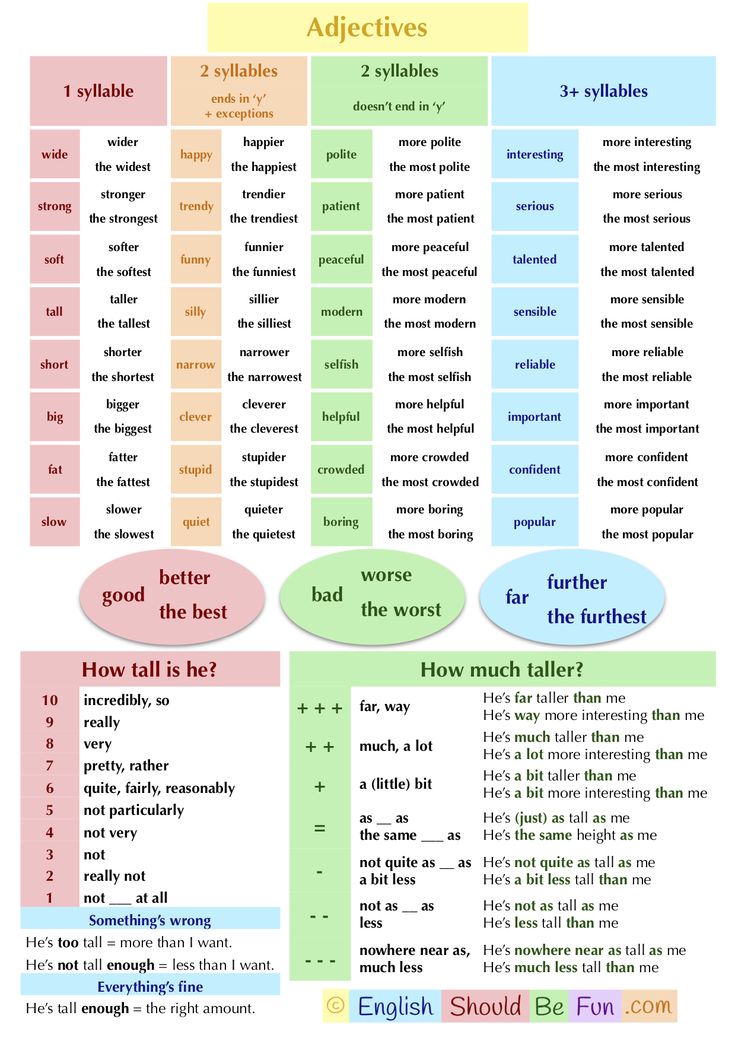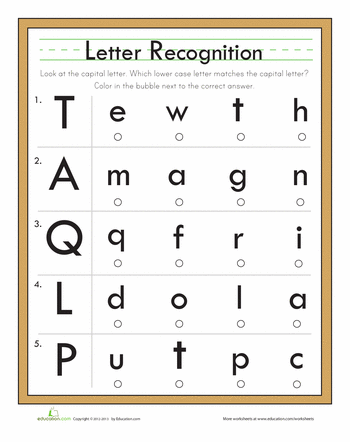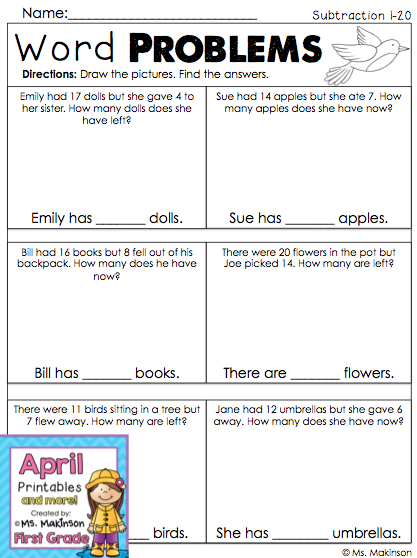What do ducks and geese eat
The Problem with Feeding Ducks
No crackers for quackers -- help keep waterfowl healthy and wild!
Heading to the park to feed the ducks is a very old and popular family pastime; it’s a fun, free activity and a great way for parents and children to see and appreciate wildlife and nature.
What many people don't realize is that bread, rolls, chips, and other human "snack food" items do not offer the proper nutrition that ducks and geese need -- and that the act of feeding a diet heavy in breads and other empty carbohydrates can lead to severe health consequences and a variety of other problems.
Nutritional Consequences
Wild ducks and geese feed on a variety of grains and grasses, aquatic plants, and invertebrates, all naturally found in the wild. When eaten in combination, these foods are nutritionally balanced and provide everything a wild duck or goose needs to survive.
In contrast, foods commonly fed to waterfowl in public parks, such as bread, crackers, popcorn, and corn, are typically low in protein and essential nutrients and minerals (such as calcium and phosphorus). While a single feeding of these “junk foods” may not harm waterfowl, it adds up! If everyone visiting a park “only” gives a few pieces of bread or crackers to ducks and geese, it quickly becomes the bulk of what wild waterfowl consume, and results in a variety of nutritional disorders.
Waterfowl in public parks are often admitted to wildlife rehabilitation centers with metabolic bone disease (MBD). Birds with MBD have incredibly soft bones and joints that are often malformed and fractured; these injuries are caused by an overall calcium deficiency in the body, which is linked to an inappropriate diet. Calcium also plays a crucial role in the formation of eggs/offspring, clotting ability, cardiovascular and neuromuscular function, and a variety of other metabolic activities. Birds with MBD are often so malformed they cannot fly and become dependent on handouts, completing a vicious cycle. Affected birds are typically too weak to compete for food and defend themselves and are often the victims of aggressive attacks by other ducks and geese.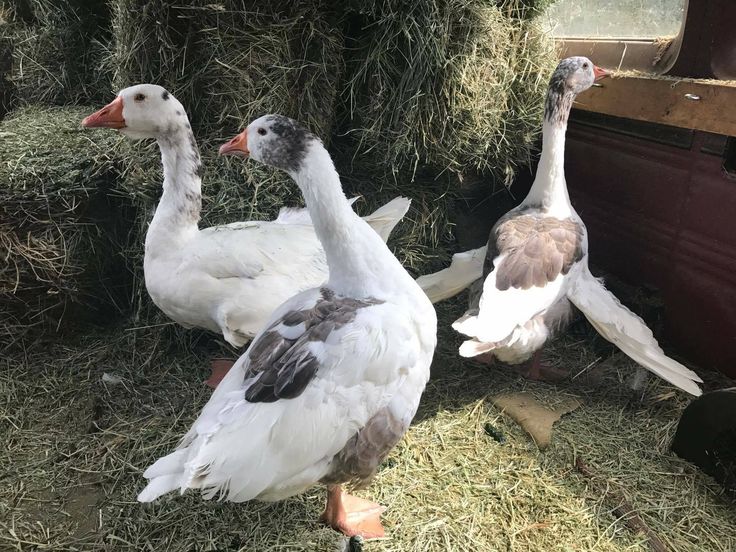
Another common issue with ducks and geese in public parks is “angel wing” -- a condition where the ends of an affected bird’s flight feathers are twisted upward. “Angel wing” occurs when ducks and geese grow abnormally quickly; the affected birds’ joints don’t fully form as the wing and feathers develop and the weight of the growing feathers rotates the tip of the bird’s wing. If caught in initial stages, waterfowl suffering from this condition may be treated with splints to guide bone growth in the correct position. Although there are several theories regarding the causes of “angel wing”, some studies suggest that diets high in protein may be to blame. Well-meaning citizens feeding commercial duck, chicken, or turkey feed to avoid the “junk food” may be unintentionally creating this disorder.
One more problem with bread products is that this type of food expands in water -- and the stomach -- which gives ducks and geese an artificial feeling that they are full. As a result, these birds may not feel motivated to continue foraging on natural foods of higher nutritional value.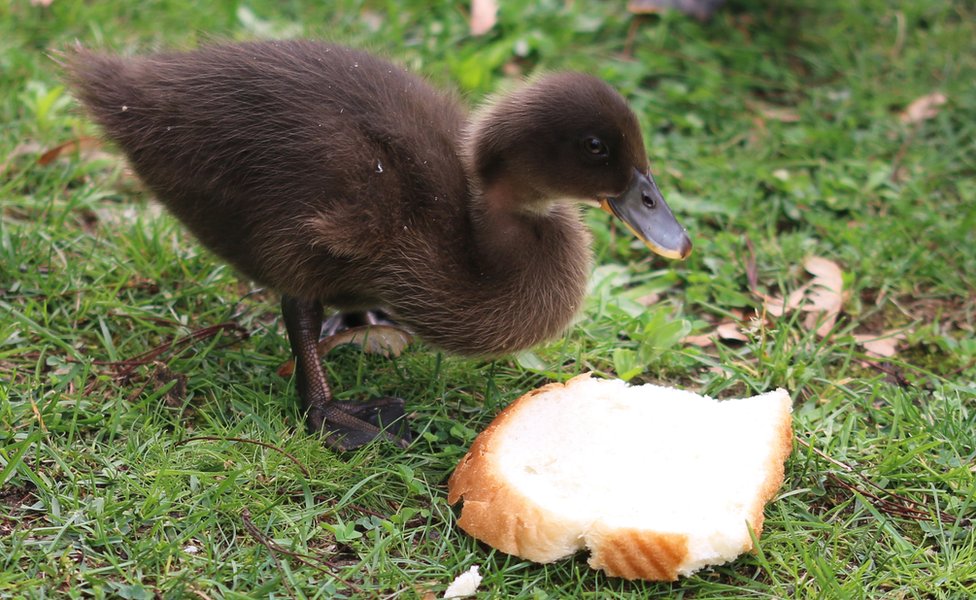
Overcrowding & Disease
In the wild, a particular lake or pond habitat can sustain a certain number of ducks and/or geese – there is a maximum number of individuals that can successfully reside there indefinitely, with enough food, water, and shelter. This “carrying capacity” of the habitat can be artificially increased when supplemental food is added.
While extra food may appear to be a good thing, it may lead to an expanded waterfowl population beyond the carrying capacity of the habitat. Without increasing space and other resources, ducks and geese can become stressed and overcrowded. Increased numbers of animals leads to increased competition for food; weaker birds in these environments often sustain severe injuries from more dominant birds. During the spring breeding season, gangs of male ducks physically attack each other to get access to female ducks. This not only leads to plucked featherless areas and skin lacerations, but females often drown as they cannot escape the driven males. Females that manage to escape the male ducks often nest up to a mile away from the water. This abnormal nesting behavior may put them at risk of urban predators, vehicle collisions, and perils not associated with nesting in natural areas.
Females that manage to escape the male ducks often nest up to a mile away from the water. This abnormal nesting behavior may put them at risk of urban predators, vehicle collisions, and perils not associated with nesting in natural areas.
Overcrowded habitats also are prime territories for disease outbreaks; there have been numerous outbreaks of botulism, avian cholera, duck plague (duck enteritis virus), and aspergillosis (fungal infection) in city duck ponds where supplemental feeding is a regular activity. The intense competition for poor quality food combined with other stressful interactions often cause the ducks and geese to have suppressed immune systems, which reduces their ability to resist infection.
For areas with high volumes of supplemental feeding, it’s also quite common for the unconsumed, leftover food to attract scavengers, including raccoons, opossums, and rats. Dense populations of these scavengers bring the potential for further disease outbreak, including zoonotic diseases that are transmissible to humans.
Habitat Degradation
There are also environmental issues related to artificially increasing the number of ducks and geese in a given area. Large numbers of waterfowl in a small area can seriously impact the surrounding environment.
Feces generated by overcrowded waterfowl result in increased deposition of carbon, phosphorus, and nitrogen in the water and surrounding grasslands. The addition of these nutrients to water (a process known as eutrophication) promotes excessive algae growth, leading to decreased oxygen levels, foul-smelling green and cloudy water, fish kills, and an overall decrease in water quality. Some common algae species (blue-green algae) even produce toxins associated with illness in wildlife, humans, and pets.
Certain species of waterfowl may also be destructive to the environment, due to their natural foraging strategies. Canada geese graze on grass and other low-growing plants and, when in large flocks, often destroy lawns and gardens surrounding city ponds.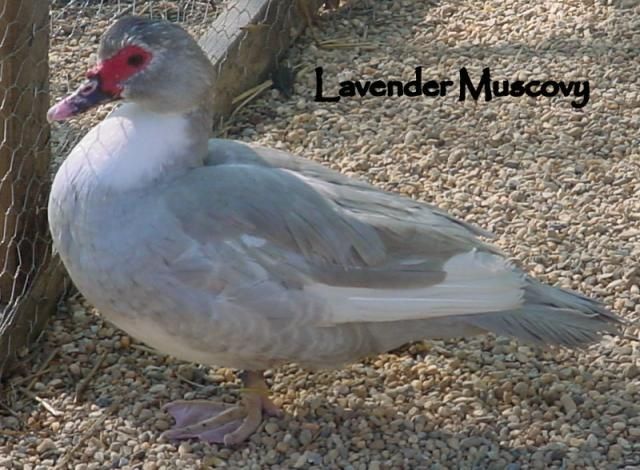 If these birds cannot find enough food, they often migrate short distances to golf courses, sports fields, and other grassy public areas yet still use the public park as a “home base”. Increased waterfowl populations can also lead to erosion of shorelines and a general negative public opinion of ducks and geese.
If these birds cannot find enough food, they often migrate short distances to golf courses, sports fields, and other grassy public areas yet still use the public park as a “home base”. Increased waterfowl populations can also lead to erosion of shorelines and a general negative public opinion of ducks and geese.
Habituation
In the wild, a healthy fear of humans and other potential predators allows ducks and geese to survive and reproduce. In public settings where waterfowl are fed artificial diets, these birds often lose this fear and are more likely to be consumed by predators (feral cats, dogs, foxes, raccoons, etc). Urban waterfowl may also be more likely to be hit by vehicles, entangled in litter, and maliciously harmed by humans. Habituated geese can pose a significant public health threat at certain times of the year if they are defending a nesting female or a brood of goslings. These habituated geese have the ability to seriously hurt humans, particularly children.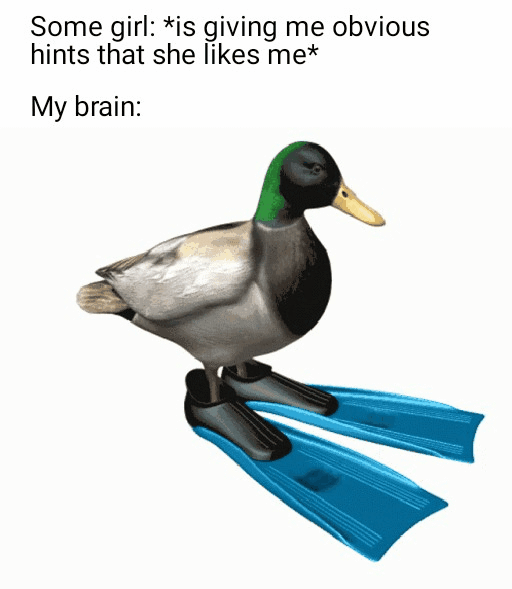
What You Can Do
Allowing ducks and geese to find their own wild, nutritionally balanced diet is best – for the health of waterfowl and the surrounding environment.
For those who would like to slowly stop feeding waterfowl: the least problematic foods mimic the waterfowl’s natural diet – greens and insects. Chopped up greens [kale, collards, dandelions (only from pesticide-free yards)] are more nutritious than any junk food, including corn. Ducks and geese eat insects too -- so a special treat of mealworms or freeze-dried crickets would also likely be enjoyed! But the bottom line is that wild ducks and geese should be able to find plenty of food on their own – so if you can resist the temptation to feed, simply pack your binoculars and camera and enjoy watching the birds.
Instead of feeding ducks and geese:
- Organize a trash pick-up at your local park.
- Collect stray fishing hooks, lines, and sinkers.
- Learn more about native ducks and geese and their natural history.
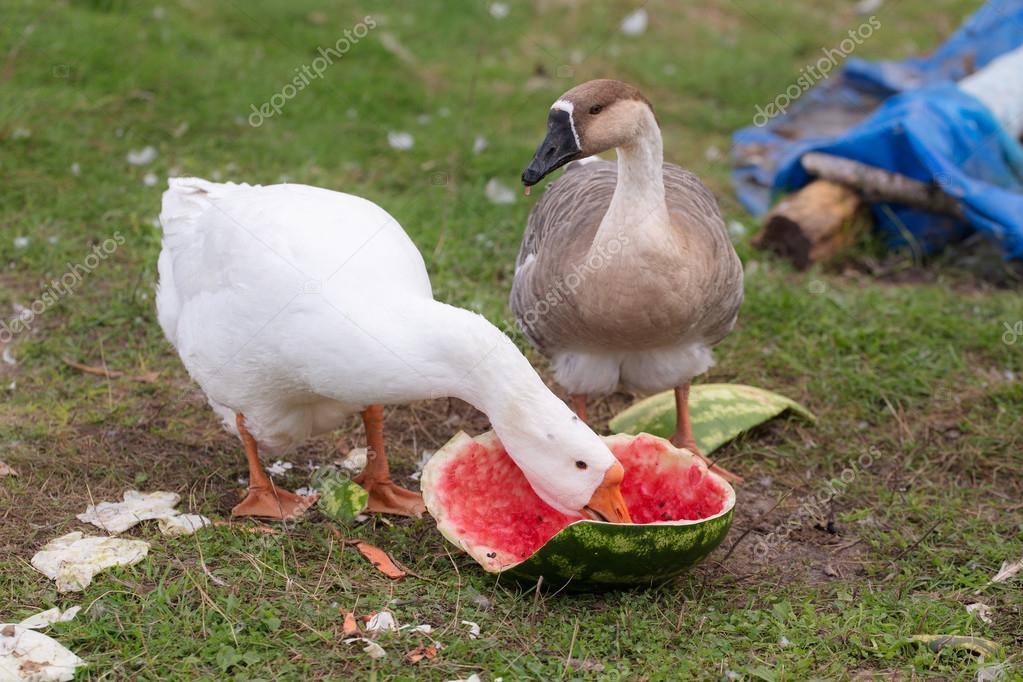
- Spread the word! Share this information with others. If your local park has a problem with feeding, contact your parks and recreation office and work together to put up educational signs. We’re happy to share a high-resolution version of the infographic below.
Duck Feeding Guide – How to Feed Wild Ducks & Geese Responsibly
It's never to young to start feeding the ducks with careful supervision, safety first and a clear understanding that they can peck HARD!
If you’re looking for outdoor activity ideas to encourage your children to love animals you can’t go far wrong with feeding wild ducks at your local lake or park.
One of the first nature encounters that many toddlers and children experience is feeding bread to the ducks. It’s a brilliant way to spark their interest in birds, nature and wildlife.
You don’t need to live in the country and it’s a great outdoor activity for all the family, whatever the weather.
But is it good for the birds and what do ducks eat?
The joy of duck feeding! Muscovys at Hackthorne, Lincolnshire
Did you know that bread can be bad for birds and the water they live in? (we’re feeding duck seed in these photos)
What do wild ducks eat?
In the wild the natural diet of ducks and geese is pond weed and other aquatic vegetation as well as seeds, small insects and worms and small water snails. Larger birds will even eat amphibians and crustaceans like crayfish!
Is bread really bad for ducks?
I first learnt that bread can be bad for ducks and geese in 2011 (Caroline was under two!) when ‘No Bread-Feeding’ signs appeared on the bank of a local lake and the visitor centre started selling wild bird seed in paper bags.
It seemed like a money-making ploy on behalf of the park but in fact proved to be a worthy conservation exercise.
The sign explains all.
Too much bread really is bad for ducks, geese, swans, watercourses and all wild birds.
Why is bread bad for ducks?
Bread offers poor nutrition to birds, it can reduce their natural behaviour and creates water pollution.
-
-
- Bread, particularly white bread, offers unbalanced nutrition and insufficient calories in winter
- It may make birds feel full when they haven’t actually eaten enough causing malnourishment
- It may affect their behaviour, reducing natural foraging for the right food
- Overfeeding can result in rotten bread creating bacteria and algae that pollute the water, poisoning birds and aquatic life
-
Read on to find out what to feed ducks instead of bread. It turns out that there are lots of things that are much better for them.
What to feed ducks responsibly
If your local park doesn’t sell seed, what can ducks eat safely instead of bread?
The Canal and River Trust recommend these foods for wild ducks: –
-
-
- Sweetcorn, tinned, fresh or frozen (defrosted first)
- Lettuce, ripped up
- Frozen peas, defrosted
- Oats, flapjacks and instant porridge oats
- Seeds from the pet shop or supermarket
- Rice, cooked or uncooked
- QuackSnacks – responsible, convenient wild duck pellets
-
NB Seeds don’t always float so scatter on the ground or in shallow water within swans’ reach.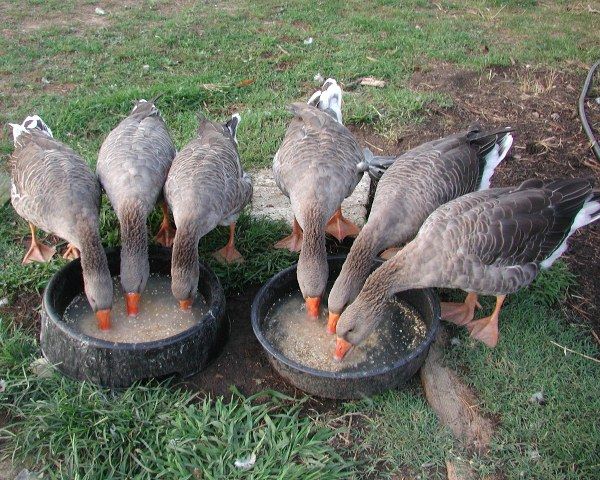
For more information download their duck guide and see links at the bottom of the page on what food to buy.
Try environmentally friendly QuackSnacks
Another great option is Quacksnacks. I recently discovered them through The Canal and River Trust and love their child-sized packs of wild duck pellets, delivered direct to your door.
QuackSnacks provide balanced nutrition combining wheat, maize, soya, fish meal, vegetable oil, vitamins & minerals which ducks and geese seem to love.
Quacksnacks reduce plastic waste
Even better, Quacksnacks are attempting to reduce plastic waste with new packaging. Kids of the Wild got to try them out first!
Their new packets are made from 100% recyclable pure pine wood cellulose (similar to greaseproof paper) with cardboard delivery boxes using a 60% bio-based packing tape.
We water-and-duck-tested the pellets with wild kids of all ages and the conclusion is:-
-
-
- Ducks love them
- Kids love them too!
-
Try Quacksnacks or any of the other food options above but whatever you do, please don’t feed bread to ducks.
Wild wishes for fun family encounters when you take your children to feed the ducks!
More inspiration
To find out what you need to know about feeding and caring for wild birds in the garden read my year-round garden bird feeding guide
Encourage garden birds by making this easy coconut bird feeder.
Learn how to hang a nestbox to attract birds to nest in your garden.
Follow Kids of the Wild
For up to date outdoor activity ideas don’t forget to follow us on Facebook, Instagram, Twitter, and sign up to the website to receive the latest posts to your inbox.
Buy duck food and accessories
Click on the images to purchase on Amazon.
Children’s i-Spy birds book
QuackSnacks 6 pack
Swan and Duck food
13kg bag floating swan and duck food
Bird identification guide
Like this:
Like Loading.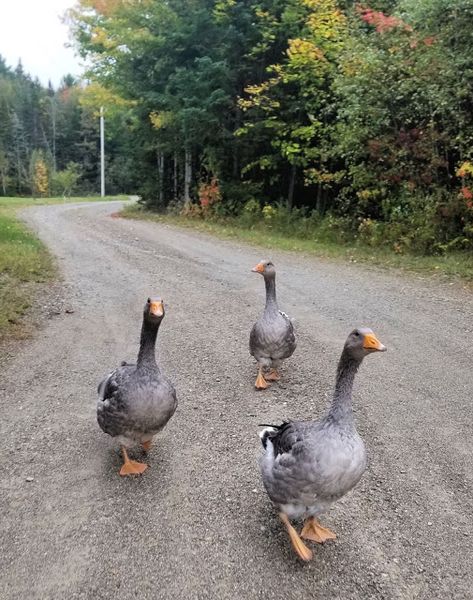 ..
..
How to feed geese at home: recommendations for feeding, diet
Proper and balanced nutrition of geese brings a good income to the breeder. Birds give a lot of eggs, meat, soft fluff. They get sick less often, the survival rate of chicks increases. Feed costs are repaid by increasing the productivity of geese and reducing the cost of veterinarians. Many breeders are interested in how to ensure proper nutrition for free-range and caged birds, in winter and summer, which foods are better to add and which ones to limit or eliminate from the diet. nine0003
Content:
- Features of the diet of geese
- Composition of feed mixtures for geese and diet
- Specifics of feeding geese by seasons
- Prohibited products
- Farmers advice on feeding geese
Features of the diet of geese
Compound feed and greens form the basis of the nutrition of agricultural birds. The diet of geese should also include fresh vegetables: potatoes, beets, pumpkin, cabbage, silage and tops.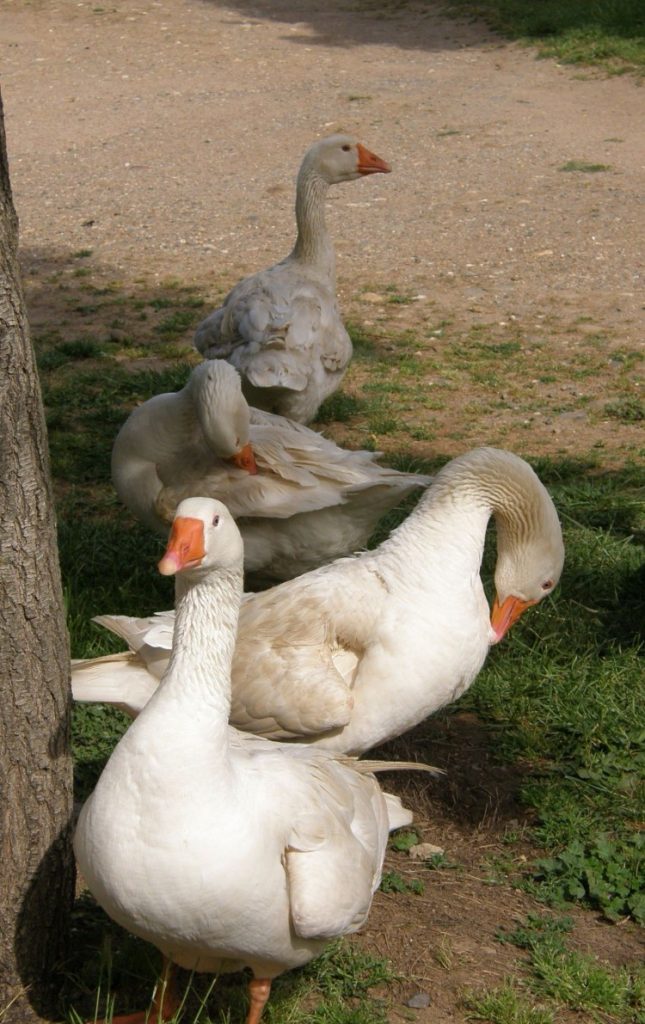 In addition to herbal ingredients, whey, skim milk, fishmeal, yeast and salt are added to goose feed. It is not necessary to give all foods daily, but each of them must be regularly present in the diet. nine0003
In addition to herbal ingredients, whey, skim milk, fishmeal, yeast and salt are added to goose feed. It is not necessary to give all foods daily, but each of them must be regularly present in the diet. nine0003
Since it is difficult for geese to digest whole grains, dry crumbly compound feed is not recommended for them. Small particles can be inhaled. Birds begin to choke and choke. It is better to give them granulated feed. Geese with appetite eat oilseeds and legumes meal and cake, and prefer clover from meadow grasses.
In order to prevent the predominance of fat mass over muscle, geese are fed only greens once a week. They tolerate the absence of grain without damage to health and growth, but they cannot do without grass or hay. nine0003
Composition of feed mixtures for geese and diet
The diet of birds is made taking into account the conditions of their keeping. There are 3 modes of feeding geese: dry, wet and combined. Regardless of the type, each of them provides for the use of:
- compound feed,
- greenery,
- roughage,
- vegetable crops.
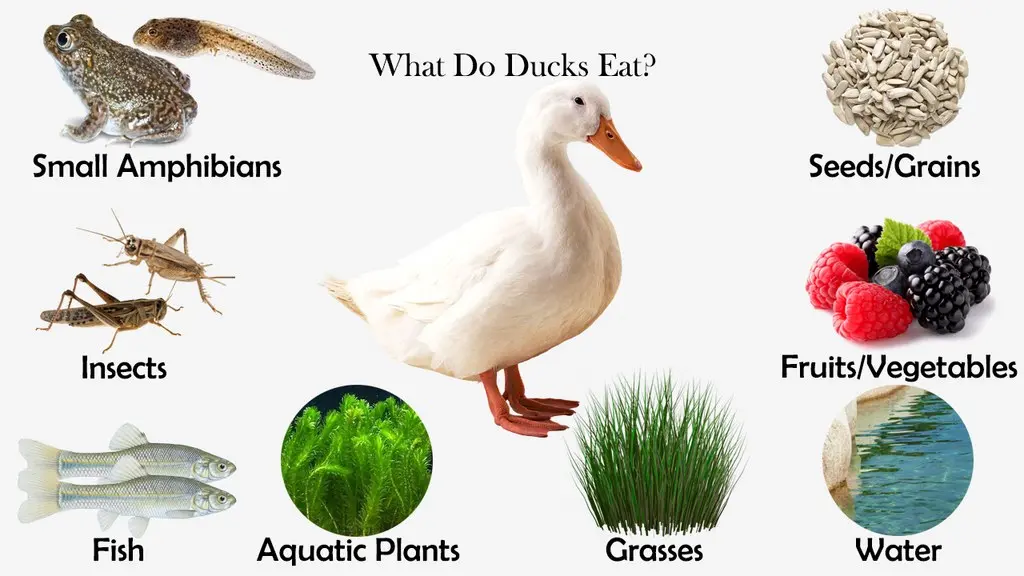
Dry feeding, as less labor intensive, is more often used in large poultry farms. For small and medium-sized farms, wet or combined is preferable. nine0003
Dry mixes are the most economical and easy to use option. They are undemanding to storage conditions. They include wheat, millet, barley, corn, rye products. All components are carefully crushed and mixed in equal amounts, so it is enough to pour them into bird feeders. However, geese gain weight more slowly on dry food, so such mixtures are usually given during the non-productive period. Also, they can't be used all the time. With the constant use of only dry food, the risk of intestinal blockage is high. nine0003
Wet mashes are given to birds three times a day. Such feed cannot be stored for a long time, so they are prepared directly on the day of consumption. Stale mixtures can cause indigestion. To prepare feed, crushed grain components are poured into wooden containers and poured with water at a ratio of 1.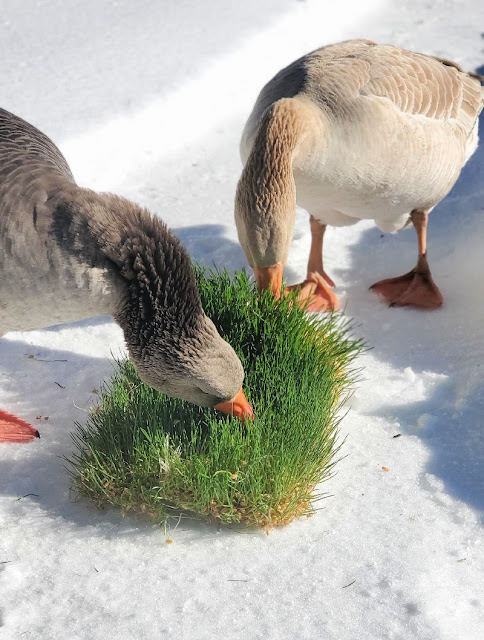 5 liters per 1 kg, and then yeast is added. The stirrer is infused for 6 hours. After that, chopped vegetables (beets, carrots, potatoes, cabbage) and fresh chopped greens are added to the feed. The preparation of such mixtures is a rather laborious process, therefore its organization at a medium and large poultry farm is not always advisable. nine0003
5 liters per 1 kg, and then yeast is added. The stirrer is infused for 6 hours. After that, chopped vegetables (beets, carrots, potatoes, cabbage) and fresh chopped greens are added to the feed. The preparation of such mixtures is a rather laborious process, therefore its organization at a medium and large poultry farm is not always advisable. nine0003
Ready mixed food combines the advantages of dry and wet food. It is easy to prepare and provides a high average daily weight gain. Roughage in combination with moist foods is much better digested, and the birds get more nutrients. A mixture of grains and vegetables is served along with a small amount of table salt.
In all feeding regimes, birds must be provided with clean drinking water. In addition, geese require mixtures of sand, gravel and small shells to cleanse their stomachs. nine0003
Feed for farm birds must fully meet their need for vitamins and minerals. There may be an insufficient amount of biologically active substances (BAS) in grain fodder and vegetables, especially in winter or early spring.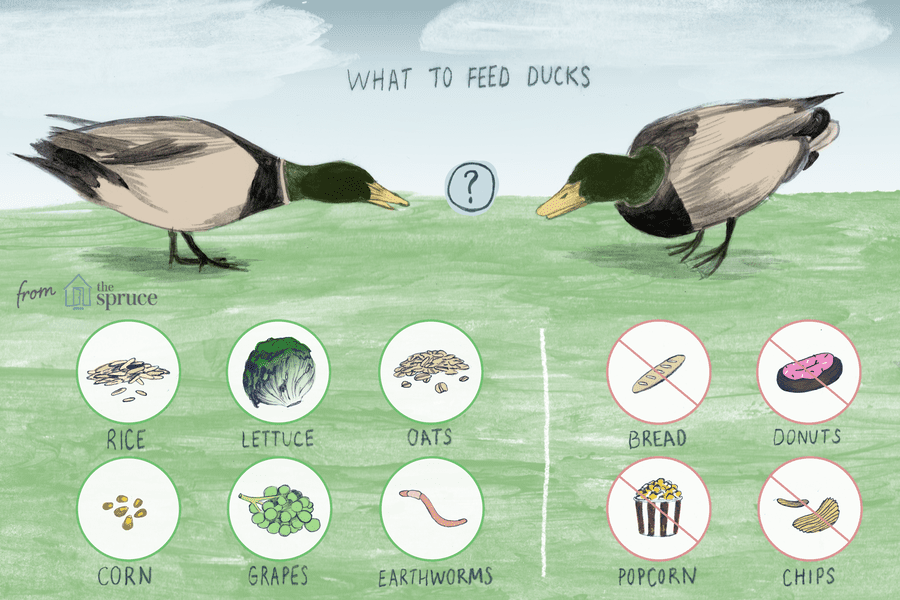 In this case, premixes rich in vitamins A, D, E, B2, as well as pantothenic and nicotinic acids, which are necessary for the normal growth of birds, are introduced into goose feed. Due to the high concentration of biologically active substances, premixes should not be given as the main product. They are added to the feed mixture in the amount of 1-5%. An excess of vitamins and minerals is no less harmful than their lack. nine0003
In this case, premixes rich in vitamins A, D, E, B2, as well as pantothenic and nicotinic acids, which are necessary for the normal growth of birds, are introduced into goose feed. Due to the high concentration of biologically active substances, premixes should not be given as the main product. They are added to the feed mixture in the amount of 1-5%. An excess of vitamins and minerals is no less harmful than their lack. nine0003
It is recommended to adhere to the following feeding schedule for geese:
- 7:00 - dry mixes containing germinated grains;
- 15:00 - vegetable crops with the addition of vitamin-mineral complexes and hay dust;
- 20:00 - a mixture of flour and grains.
Geese need special fattening before laying for at least 30 days. Their diet must include wheat and oats, legumes, vegetables, meal and oilseed cake, as well as bone or fish meal. Geese are fed 4 times a day, giving them dry and wet mixtures alternately. 1 week before laying eggs, vitamin complexes are added to the diet. nine0003
nine0003
Feeding specifics of geese by seasons
In summer, the main part of the bird's diet is a variety of greens. Geese grazing on the range feed on:
- fresh nettles,
- dandelions,
- cereals,
- sorrel,
- legumes,
- plantain,
- yarrow,
- clover,
- alfalfa.
Swimming in reservoirs, they catch duckweed, cattail, reeds, chastukha. Grazing provides significant savings in feed, but they cannot be completely excluded, since greenery alone is not enough for birds to gain weight. Normally, geese eat about 2 kg of fresh grass per day, and they get the rest of the calories from grain fodder, vegetables, roughage (hay and branches). nine0003
For accelerated weight gain, it is preferable to give them a mixture of high grains twice a day: oats, barley, wheat, rye, corn. On average, in addition to greens, geese daily need:
- 700 g of cereals and legumes;
- 500 g potatoes;
- 250 g carrots and beets;
- 300 g hay dust or flour;
- 100 g silage;
- 25 g minerals (salt, shell).
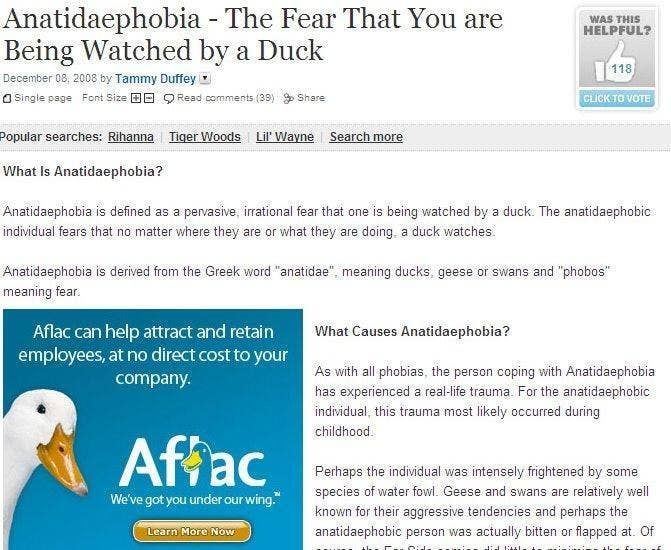
In addition, it is useful for geese to give cottage cheese, eggs, chalk (10 g per bird). Solid legumes are introduced only in boiled form, so that they cannot be choked on. Cereals can be partially replaced with dried bread in an amount of up to 60 g, coniferous hay flour (up to 20 g). nine0003
Geese who are constantly in the house must be fed three times a day. In winter, the diet is based on cereals:
- barley,
- oats,
- ground corn,
- wheat bran,
- millet.
The lack of fresh herbs is compensated by silage, dried tops, hay dust and premixes. In a warm climate, short-term grazing on water bodies is possible, during which geese feed on the remains of duckweed and other algae. A significant place in their diet in the autumn-winter period is occupied by silage, which in its composition is closest to green fodder. It is also useful to add needles of pine or spruce. It compensates for the lack of vitamin C, stimulates the appetite and immunity of geese, helps to increase the number and improve the nutritional quality of eggs.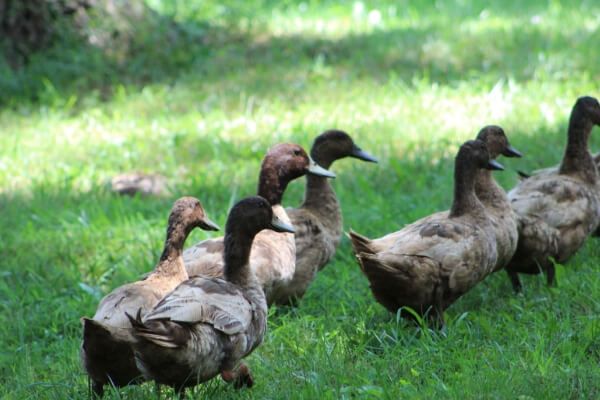 It is important to consider that needles require preliminary preparation. It is first dried and then carefully ground. It is more profitable for owners of medium and large poultry farms to order ready-made vitamin complexes with a similar composition. nine0003
It is important to consider that needles require preliminary preparation. It is first dried and then carefully ground. It is more profitable for owners of medium and large poultry farms to order ready-made vitamin complexes with a similar composition. nine0003
Sunflower meal and cake are often added to hay dust and flour. Geese eat oilseed products well and put on weight quickly. Dried gray bread is introduced as a delicacy to stimulate appetite, but it is not recommended to give it in large quantities.
Prohibited foods
Not all herbs are good for geese. The use of some of them can provoke indigestion, decrease in productivity, and in some cases lead to death in the poultry house. Especially dangerous herbs are:
- sedge,
- cuff,
- goose foot.
Geese usually avoid them. However, with insufficient nutrition and the absence of other vegetation on the pasture, they can begin to eat harmful grasses. Breeders need to check grazing areas and make sure the geese are getting enough calories while feeding in the poultry house.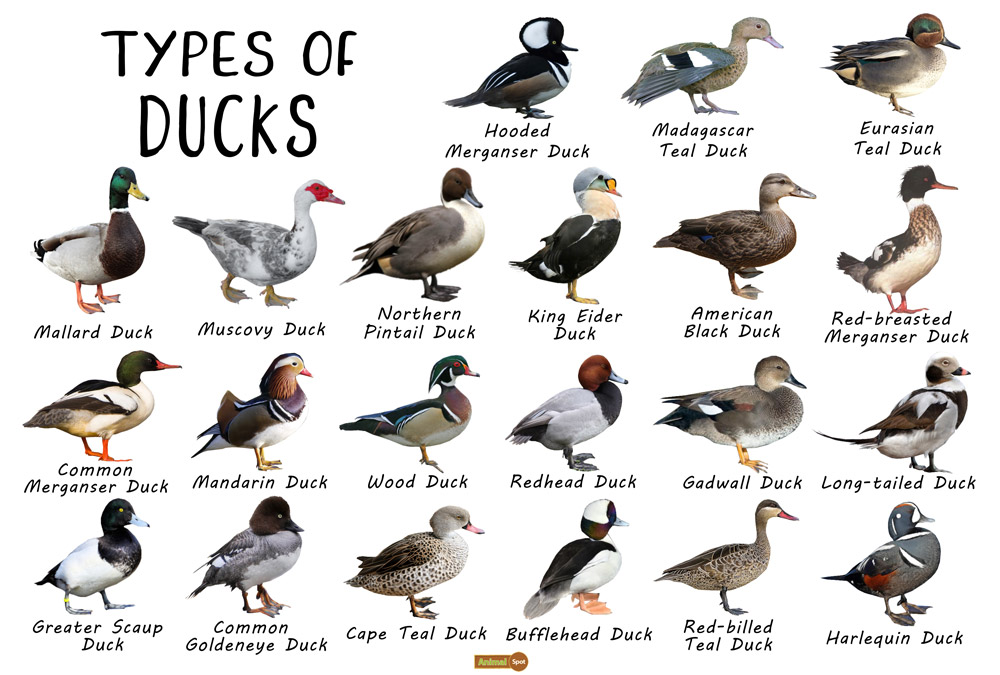 This question is especially relevant in early spring. On the first outings on the water, geese that did not receive fresh greens can eat harmful algae, silt, small fish and become infected with intestinal infections. To avoid this, birds are fed and released at first for no more than 3-5 hours before walking.
This question is especially relevant in early spring. On the first outings on the water, geese that did not receive fresh greens can eat harmful algae, silt, small fish and become infected with intestinal infections. To avoid this, birds are fed and released at first for no more than 3-5 hours before walking.
In addition to wild grasses, outbreaks can be caused by freshly harvested rye, cereals contaminated with mycotoxins, or sprouted potatoes with green areas containing solanine. All ingredients must be carefully checked before use. Rye should rest for at least 3 months, cereals damaged by mold and green potatoes are thrown away.
Farmer's recommendations for feeding geese
- The type of diet depends on the direction of the birds. To obtain meat, it is important to provide geese with high-calorie nutrition. If you plan to breed chicks, it is important to reconsider the feeding regimen for geese. Overweight females are less healthy and less likely to lay eggs.
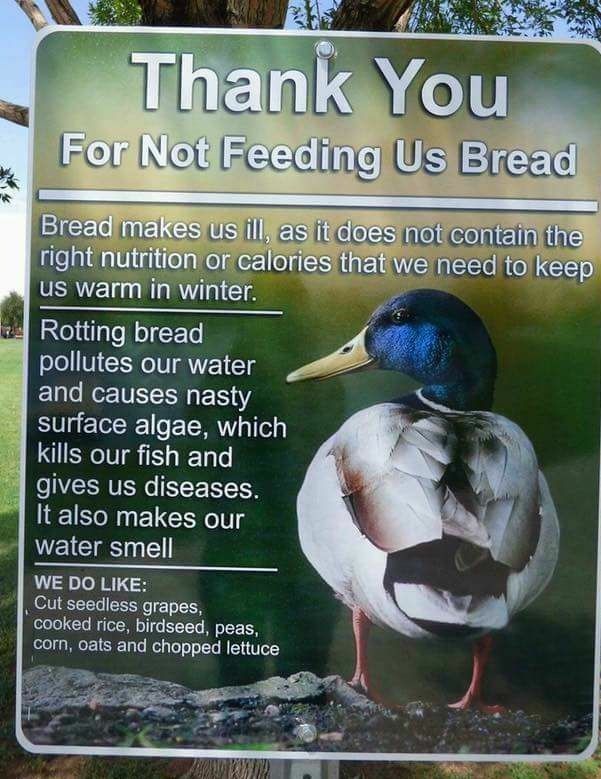 On the other hand, just before laying, geese require a hearty diet high in vitamins and minerals. To meet the needs of birds in calories and prevent obesity, their diet is enriched with fresh fish, skim milk and whey. nine0008
On the other hand, just before laying, geese require a hearty diet high in vitamins and minerals. To meet the needs of birds in calories and prevent obesity, their diet is enriched with fresh fish, skim milk and whey. nine0008 - The immune system of chicks begins to form already at an early age, but their stomachs are not yet able to digest all the components of the feed. Therefore, in the first 3-4 days they are given a yolk pre-cooked and mixed with boiled water, gradually adding chopped onion feathers to it.
- Starting from the 6-7th day, the ration of goslings is replenished with fresh alfalfa and nettle. From a week old, wheat or corn porridge and boiled potatoes are added to the feed. However, the number of new products should not exceed 15%. By 12 days, goslings are able to absorb well-chopped raw vegetables. nine0008
- Chicks at the age of 17-28 days are independent enough to pluck greens on the run. They are released to pasture along with adult birds, but in the morning and evening they are fed separately with crushed and steamed grain with the addition of fresh vegetables.
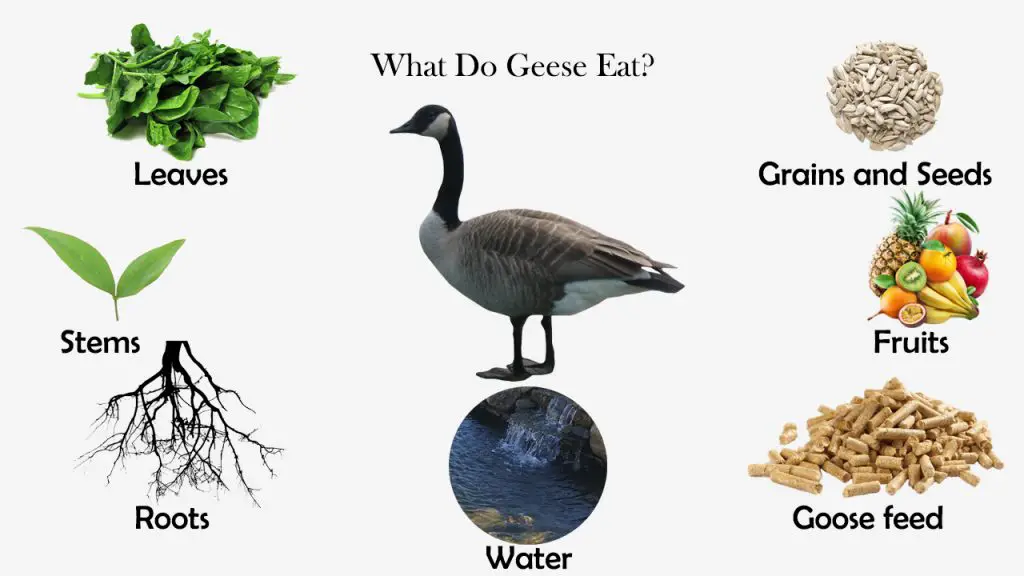 The content of cereals in the diet during this period should not exceed 20%. It is useful for goslings to give carrots, beets, pumpkins, boiled potatoes so that they receive enough vitamins of groups A and B.
The content of cereals in the diet during this period should not exceed 20%. It is useful for goslings to give carrots, beets, pumpkins, boiled potatoes so that they receive enough vitamins of groups A and B. - After 4 weeks the chicks switch to an adult diet and start fattening them for meat. In order for geese to gain weight better, from this age they are given high-calorie compound feed with a high grain content. In the finished product, all the necessary components are balanced for rapid weight gain, strengthening of the skeleton and normal digestion. nine0008
- Approximately 30 months before slaughter, geese are transferred to enhanced fattening. The daily portion of cereals alone reaches 400 g. Birds must always have food and enough water. If you leave the feeders lit, the geese will eat even at night. During this time, they gain about 1.5 kg.
- With the intensive rearing method, the total fattening period is on average 2.5 months. Geese are not released to pasture to limit their movement.
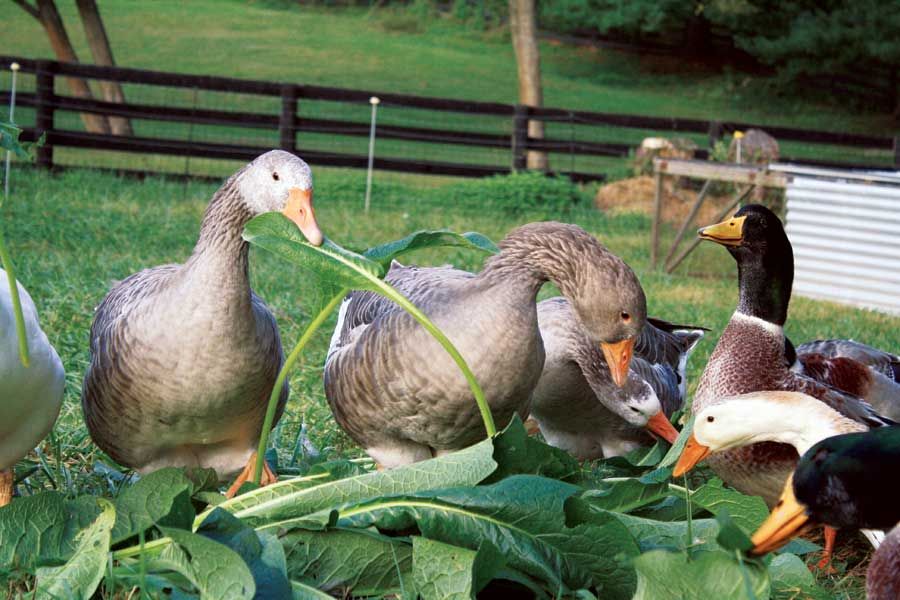 Birds are kept in special boxes with a hole for the head, and feeders are placed in front of them. To accelerate weight gain and increase slaughter weight, force-feeding is used. nine0008
Birds are kept in special boxes with a hole for the head, and feeders are placed in front of them. To accelerate weight gain and increase slaughter weight, force-feeding is used. nine0008
Compiling a balanced diet for geese of different ages is a difficult task. Buying ready-made feed and premixes greatly simplifies it. In our company, you can order safe, high-quality mixtures for meat and egg-laying poultry.
Keeping and feeding ducks and geese
Keeping and feeding ducks and geeseVery often geese and ducks are bred in private farms. But not everyone knows how to properly organize the maintenance and feeding of these birds. nine0003
Ducks of the Temp cross are distinguished by high growth rate and good reproductive abilities. For 50 days of cultivation, their live weight reaches 2800-3000 grams. Duck meat is tender and nutritious. Its production is economically profitable, especially if the personal estate is located close to water bodies and pastures.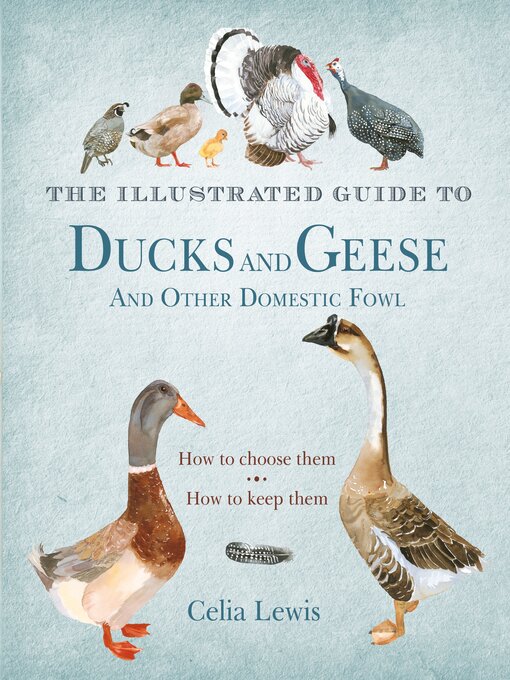
In the warm season, from the age of five days, ducklings are released for walking. So that they do not overheat, it is necessary to arrange shady canopies. They can also protect from the rain. The best bedding for ducks is a fire, sawdust, good-quality straw cutting. nine0003
When growing ducklings for meat, they are fed ad libitum, that is, the food in the feeders must be constantly. In the first 3 days of life, hard-boiled duck or chicken eggs and moist crumbly mash, which should include grain, vitamin, mineral feed and feed of animal origin, are good for them. Fresh greens are given from 2-3 days of age in flour mixtures of 10 grams. By the age of 20 days, the norm is increased to 20 grams. 2 grams of cottage cheese or 10-15 grams of curdled milk per head per day are also introduced into the diets. nine0003
A good effect after 10 days of age is the addition of 20-40 grams of boiled potatoes to the mash. It is desirable to make mixers semi-dry, crumbly. Drinkers should always have clean water.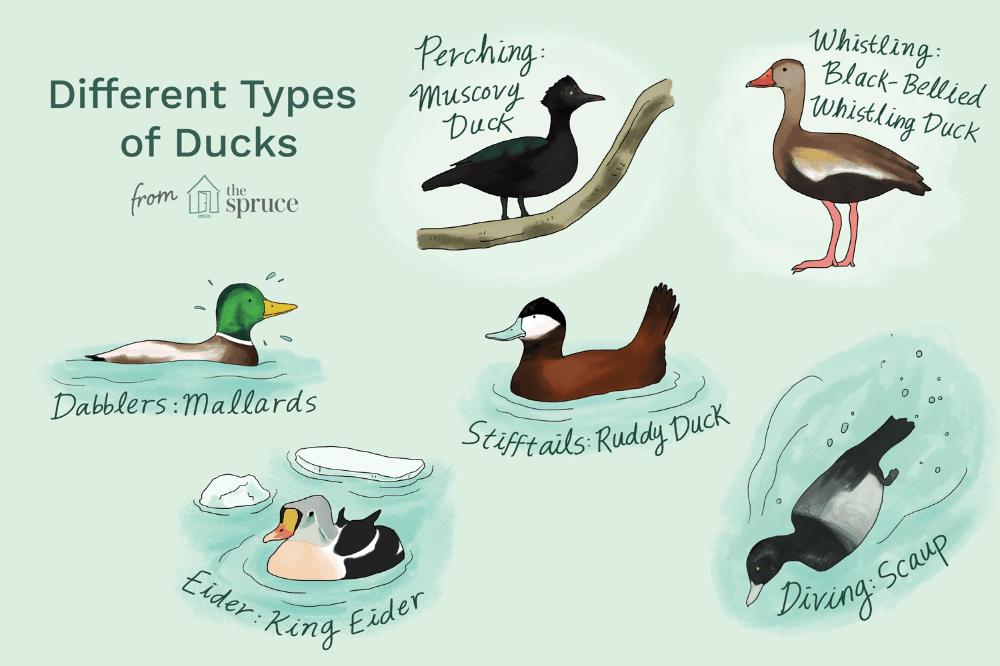
Growing ducklings for meat up to 50-55 days of age is economically profitable. The goose, unlike other poultry, feeds mainly on grass, eats up to 2 kg of greens per day. Geese can eat in large quantities cheap green fodder, root crops, and low-value concentrates. Growing goslings is carried out according to the same principles as ducklings. Good food in the first days of life are grated carrots, beets and vegetables. Clean fresh water should be in the drinkers at all times. In the first decade, goslings are fed 6-7 times a day, after 2-2.5 hours, with a break at night, at 10 days of age - 5 times, at 20 days of age - 4 times and in a month - 3 times a day . nine0003
G For meat, it is most profitable to grow goslings up to 65-70 days of age. When grown for meat, when there are no pastures nearby, the following diet is recommended (in percent): ground grain - 20, wheat bran - 10, peas, beans - 10 or fresh herbs - 50, shell or ground chalk - 2.5, salt - 0.5. If possible, goslings should be in the pasture as long as possible. Two weeks before slaughter (150-180 days), the bird is put on fattening, fed 3 times a day (grain and grain waste). At night, the food is not removed, the geese eat it even in the dark. nine0003
Two weeks before slaughter (150-180 days), the bird is put on fattening, fed 3 times a day (grain and grain waste). At night, the food is not removed, the geese eat it even in the dark. nine0003
Under good growing conditions, the live weight of goslings of the Rhine breed in two months reaches 3.5-4 kg, adult geese - 5-5.5 kg, ganders - 6-6.5 kg.
In late autumn and winter, when adult geese do not use grazing, they are fed steamed clover chaff, finely chopped hay, grass flour, dry nettles, and raw root crops (beets, carrots, rutabaga, turnips) in wet mashes. Potatoes are given boiled, up to 400 g per head per day. By the onset of cold weather, geese should have good fatness. An emaciated bird does not tolerate wintering well. In the productive period, to ensure high egg production, geese are fed 4 times: in the morning and 2 times in the afternoon with a wet mash, and at night with grain, and half of the grain is fed in sprouted form. nine0003
In short autumn-winter days, an increase in daylight hours to 14 hours due to additional lighting increases the annual egg production of birds by 20-30%.



